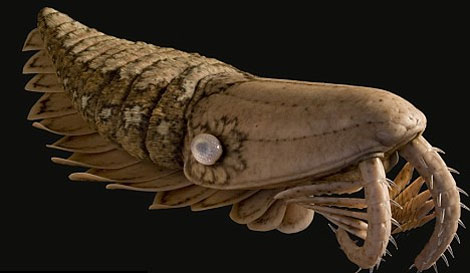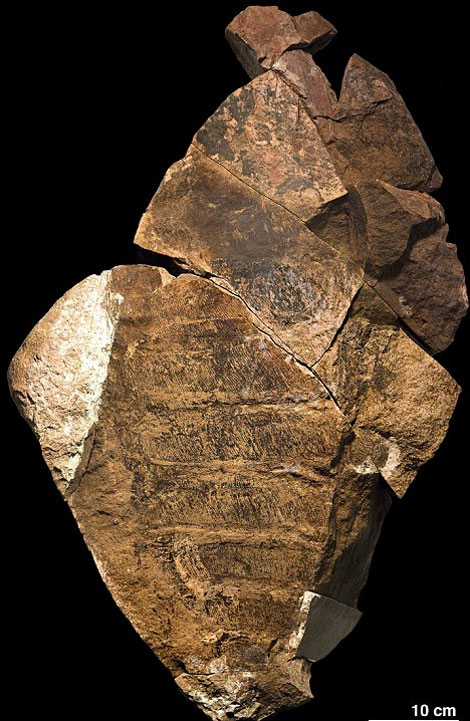Discover giant shrimp fossils, razor-sharp teeth
A giant prehistoric creature shaped like a shrimp once "terrorized" oceans more than half a billion years ago has just been discovered by scientists.
This frightening monster called anomalocaridids lives in the Cambrian period, the complex stage of the ecosystem began to form. An adult anomalocaridids can be up to 1.80 m long and look quite similar to today's shrimp.
But there is one difference: they have extremely sharp and strong teeth that can break the hard shell of other marine creatures to eat meat.

Anomalocaridids have the shape of a giant shrimp.
The complete fossil of one of them was recently discovered by Maroco scientists showing that they are much larger in size than the previously discovered fossils (only 0.9 m long). ) and they were present on Earth 30 million years earlier as people thought.
They appeared in ancient oceans from 488 to 472 million years ago, not 540 to 500 million years ago.
Anomalocaridids shrimp have very large eyes, a sharp tooth that looks like a pincer. Fossils also show that they have a variety of fibers that function like gills. When they die, their bodies sink into the deep ocean and are decomposed into different parts so finding a complete fossil of them is rare.
At the site of the fossils of giant shrimp anomalocaridids in Moroco, archaeologists found thousands of other evidence of molluscs dating from 488 to 472 million years old.

The relatively intact fossil of anomalocaridids is believed to date to about 488 to 472 million years ago, 30 million years earlier than the time
still thought.
Typically, the fossil of a complete brain belonging to a large mammal lives in the old Peruvian jungle area now 20 million years ago. Meanwhile, the fossil brain of the oldest known mammal dating back 300 million years is found in Kansas.
The new findings suggest that the biodiversity in the Cambrian period may have appeared 30 million years ago compared to the time that humans have known so far. In addition, it also tells about the typical animals that live in this century.
- The ancestors of salmon have sharp teeth 20cm long
- Discover fossils of exotic shrimp with apricot and 50 legs
- 96 million-year-old 'iron dragon' fossils, razor-sharp teeth in Australia
- Why can snails crawl through razor sharp blades without harm?
- Video: Sea shrimp skewered with belly, tearing the arowana in the blink of an eye
- 'Sea monsters' are not aggressive
- Shrimp doctor teeth hygiene for divers
- Shrimp 'living fossils' resemble revived alien creatures
- Discover dinosaur fossils like real Loch Ness monsters
- Discover the tooth 5 million years of giant killer whale
- Giant river shrimp image
- The secret of the sea urchin's sharp teeth
 Discovered an ancient centipede fossil 99 million years old
Discovered an ancient centipede fossil 99 million years old Discovered bat-like dinosaurs in China
Discovered bat-like dinosaurs in China Discovered a 200-year-old bronze cannon of the coast
Discovered a 200-year-old bronze cannon of the coast Discover 305 million-year-old spider fossils
Discover 305 million-year-old spider fossils